The International Day of Women and Girls in Science, which takes place February 11th 2024, serves as a pivotal reminder of the essential contributions women and girls make to the scientific and technological communities.
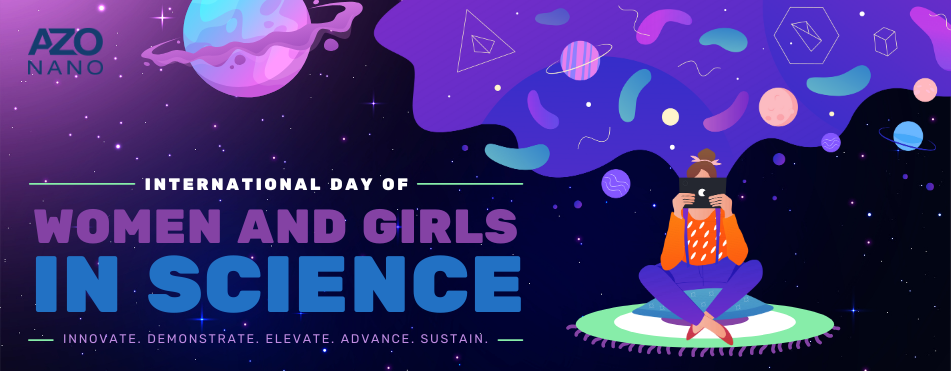
The Need to Address the Gender Gap
According to statistics provided by the United Nations, women frequently receive less funding for their research than their male counterparts, and despite constituting 33.3% of all researchers globally, only 12% are represented within national science academies.
In forefront areas like artificial intelligence, the presence of women is notably lower, with only 20% being female. Amidst a widespread skill gap in the technological domains pivotal to the next industrial revolution, women constitute merely 28% of engineering graduates and 40% of graduates in computer science and informatics.
Female scientists often experience shorter careers that are less financially rewarding. Their contributions are less frequently featured in leading scientific journals, and they commonly face obstacles to career advancement.
Despite the critical importance of Science, Technology, Engineering, and Mathematics (STEM) to the economic growth of nations, gender equality within these fields remains an unmet goal in many countries, regardless of their development status.
A Year in Review: Celebrating The Contributions of Women to Graphene Research
Graphene, since its groundbreaking isolation in 2004, has been hailed as a “wonder” material, transforming expectations across several scientific disciplines, from nanotechnology to electronics and biomedicine. Its unique properties position graphene at the forefront of technological innovation.
Behind these innovations lie the researchers investigating graphene's behavior and exploiting the benefits it may bring. Without them, it is unlikely that graphene would maintain its “wonder material” reputation.
Whether it is exploring its quantum potential or enlisting graphene in the design of neural implants, we are proud to highlight some of the women over the past year who have made impactful contributions to graphene research, in celebration of 2024's International Day of Women and Girls in Science.
As we explore these advancements, AZoNano underscores the principle that true scientific innovation emerges when everyone is afforded an equal opportunity to contribute to the search for discovery.
Utana Uzemaki, Rice University
Utana Uzemaki is a lead author of an investigation that sought to shed light on the movement of flecks of 2D materials in liquid, providing insights crucial for assembling macroscopic-scale materials with similar properties as their 2D counterparts.
The research, published in ACS Nano focused on graphene and hexagonal boron nitride, aiming to understand their diffusion dynamics in solution, a critical step in maintaining their special properties in bulk form.
By using a fluorescent surfactant to tag nanomaterial samples and visualize their motion, researchers mapped out their trajectories and identified a relationship between their size and speed of movement.
The findings, including a simple equation to predict movement mathematically, offer valuable insights into the behavior of 2D materials in confined environments, which could aid in overcoming fabrication challenges and ultimately enable the creation of macroscopic materials with enhanced properties.
Uzemaki discusses the significance of this research, explaining that it is "one of the very first studies that observed the diffusion of two-dimensional nanomaterials in solution at the single sheet level."
"Although two-dimensional nanomaterials have garnered significant attention in many fields, including energy storage, water treatment, and drug delivery, the application of two-dimensional nanomaterials is still challenging. We hope our work can fill the knowledge gap in the social implementation of two-dimensional nanomaterials."
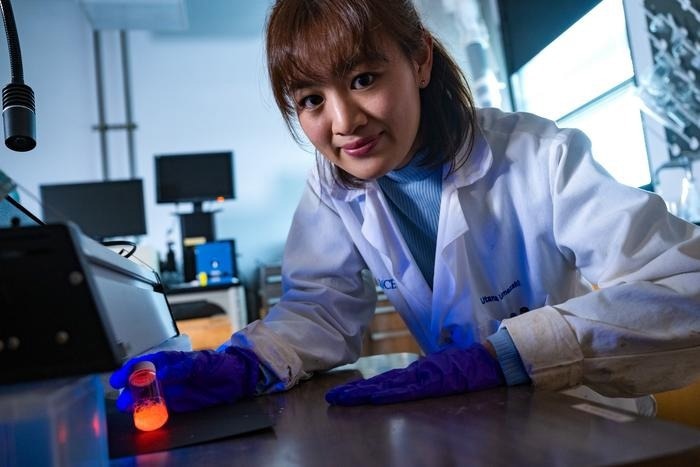
The researchers used a fluorescent surfactant, i.e. glowing soap, to tag the nanomaterial samples and render their motion visible. Image Credit: Jeff Fitlow/Rice University)
Exploring BLG's Suitability For Solid-State Quantum Computing
Rebekka Garreis & Chuyao Tong, ETH Zurich
Garreis and Tong discuss what initially inspired their career in STEM. For Garreis, curiosity has always been at the heart of her life. She tells AZoNano, "I've been curious about the world around me and have had a fascination for understanding how the universe works. My journey has led me to specialize in quantum computing, a domain that marries theoretical concepts with tangible applications."
"The prospect of contributing to a rapidly evolving field, with clear objectives and real-world implications, is both exhilarating and fulfilling...I can not only explore the unknown but also actively shape the future of technology and science.”
For Tong, inspiration came from a surprising source.
"When choosing my major, one of my Physics teachers made a comment that stuck with me: “You are very hard-working, but you are not an Einstein.” Rather than being discouraged, I let this statement motivate me."
I believe that modern physics research is not built by a few geniuses. It is built by many curious, hard-working individuals, who are passionate about exploring the unknown frontier and are determined to attempt to answer the hardest questions."
Chuyao Tong, ETH Zurich
Garreis and Tong collaborated with colleagues to investigate the potential of bilayer graphene (BLG) quantum dots for spin quibits by exploring the valley degree of freedom in BLG. Published in Nature Physics, the study revealed remarkably long relaxation times for valley stages in bilayer graphene, suggesting its suitability for solid-state quantum computing.
Speaking on the research, Garries comments, "The results of our research on graphene quantum dots are especially exciting because it renews the promise of a material that captured the attention of researchers when it was first discovered. Despite the challenges of working with graphene, our findings align with recent publications and experimental evidence, validating the long-held belief among theorists that graphene is a promising candidate for semiconductor qubits. It's a reminder that perseverance and dedication can lead to significant discoveries."
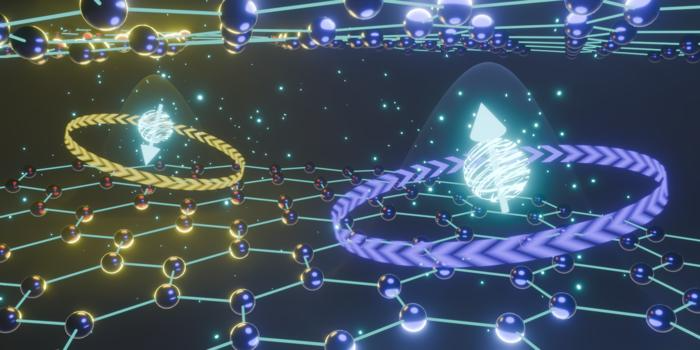
In the BLG double quantum dot used in this work, electrons (the blue spheres) have both an intrinsic angular momentum (spin, given by the arrows through the spheres) and a pseudo-spin (valley, given by the rings rotating in opposite directions). Image Credit: ETH Zurich/Chuyao Tong
Tong also expresses her excitement about this development, "Quantum technology is starting to become increasingly tangible to us. There exists a wide array of systems and platforms: superconducting qubits, spin qubits, trapped ions, … each with its unique fundamental advantages and bottlenecks. In our work, we explored another possibility that physics has to offer: we introduce valley states as a possible new type of qubit states with encouragingly long relaxation times, offering fresh avenues for further exploration and development."
As two women leading this investigation, Garreis emphasizes that her collaboration with Tong significantly aided the paper's success.
Working together in a field largely dominated by males has been refreshing, as we share a natural understanding of each other's challenges and insecurities. Our ongoing discussions often center around the mutual belief that the other possesses a better grasp of the subject matter, fostering a supportive and intellectually enriching partnership.
Rebekka Garreis, ETH Zurich
Revolutionizing Deep Brain Monitoring With Graphene Neural Implants
Professor Duygu Kuzum, UC San Diego Jacobs School of Engineering
Led by Professor Duygu Kuzum at UC San Diego, researchers developed a neural implant featuring a thin, transparent polymer strip embedded with high-density graphene electrodes, detailed in Nature Nanotechnology.
Tested in mice, the transparent graphene electrodes allow simultaneous electrical recordings and optical imaging to record deep neural activity with high resolution while remaining minimally invasive. By using machine learning, neural activity from surface signals can be predicted, enabling longer experiments in real-world settings.
Challenges in fabrication were addressed with double-layered graphene wires and platinum nanoparticle deposition. Moving forward, the researchers hope to conduct further testing in different animal models and seek NIH funding for production scaling.
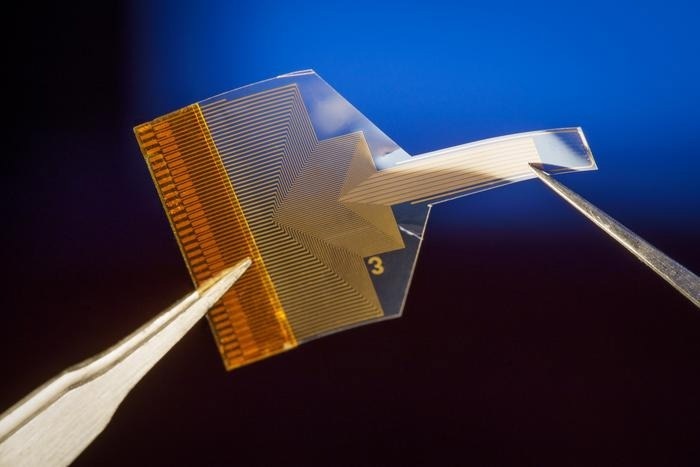
When placed on the surface of the brain, this thin, flexible implant enables researchers to capture high-resolution information about neural activity deep inside the brain without damaging its delicate tissue. Image Credit: David Baillot/UC San Diego Jacobs School of Engineering
Graphene Gives Copper Conductivity a Boost
Keerti Kappagantula, Pacific Northwest National Laboratory
Describing her inspiration for joining the STEM field, Kappagantula notes her desire to carry out research with real-world applications, to "develop solutions that were impactful for relevant industrial problems."
I liked the idea of developing next-generation high-performance materials using advanced manufacturing approaches. It provides a pathway for translating lab-scale technologies into commercial applications, especially working at a national laboratory."
Keerti Kappagantula, Pacific Northwest National Laboratory
By working at Pacific Northwest National Laboratory, Kappagantula has found a balance between conducting fundamental scientific research and developing engineering solutions.
Kappagantula led colleagues at Pacific Northwest National Laboratory to discover that adding a small amount of graphene to copper wires reduces their temperature coefficient of resistance, improving their conductivity without sacrificing electrical properties.
Published in Materials & Design, the study has significant implications for electricity distribution systems, electric vehicles, and industrial equipment. Supported by the Department of Energy, the team's findings could lead to more efficient motors and wiring systems, enabling higher operating temperatures and greater energy savings in urban settings.
"This paper shows that we can make bulk-scale enhanced conductivity materials (like copper) through the addition of small quantities of graphene using an advanced manufacturing platform called ShAPE – stands for shear assisted processing and extrusion. More importantly, the conductivity improvement is seen at relevant operating temperatures (>90C)."
Kappagantula further elaborates, "Most studies in this area aim to enhance room temperature conductivity (at 20C) and in ‘small0-scale samples’, but the improvements are lost at elevated temperatures. Most applications with conductors use the materials at elevated temperatures and need bulk scale components."
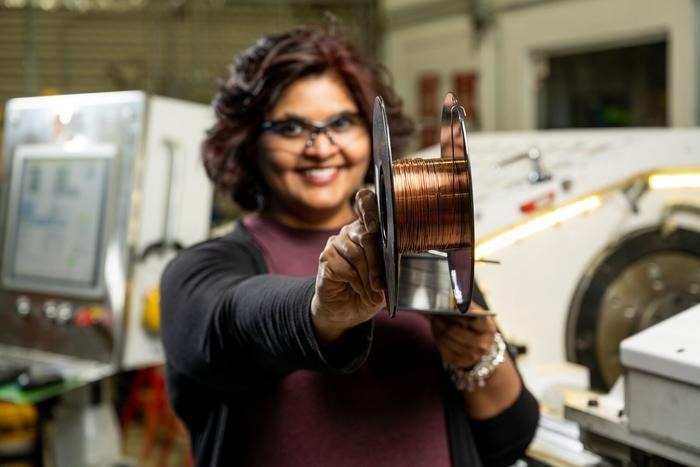
Keerti Kappagantula and her colleagues developed highly conductive copper wire in bulk, as shown here. Image Credit: Photo by Andrea Starr, Pacific Northwest National Laboratory
Tuning Friction on Graphene Surfaces via External Electric Fields
Professor Rosa Espinosa-Marzal, University of Illinois Grainger College of Engineering
Researchers at the University of Illinois Urbana-Champaign, led by Professor Rosa Espinosa-Marzal from the Department of Civil and Environmental Engineering, discovered a method to dynamically tune friction on graphene surfaces using external electric fields. Published in Nature Communications, the authors emphasize the need for innovative approaches to surface design, highlighting 2D materials like graphene for their exceptional mechanical strength and stability.
Graphene typically exhibits low friction on coated surfaces. However, the team demonstrated that applying an electric field can activate higher friction states, which can be controlled and reverted without significant electrical biases.
The work will be impactful in reducing energy consumption in nano- and micro-electromechanical systems, in addition to allowing dynamic control of friction while mitigating the enhanced wear and corrosion of sliding surfaces when direct bias is applied."
Professor Rosa Espinosa-Marzal, University of Illinois Grainger College of Engineering
How 'Quantum Alchemy' Could Push Graphene's Potential Forward
Maëlle Kapfer, Columbia University
In the field of condensed matter physics, "twistronics" explores how slight variations in the twist angle between stacked layers of 2D materials, like graphene, can drastically alter their properties. While this concept offers exciting possibilities, controlling these properties has been challenging. Researchers, including co-first author Maëlle Kapfer, developed a novel fabrication technique using graphene ribbons, reporting their findings in Science to address this.
By bending these ribbons into stable arcs, they achieved precise control over the twist angle and strain, leading to more uniform devices. This advancement enables systematic exploration of the fundamental properties of twisted 2D materials, paving the way for insights into phenomena like superconductivity at "magic angles."
“We no longer have to make 10 separate devices with 10 different angles to see what happens. And, we can now control for strain, which was completely lacking in prior twisted devices," notes Kapfer.
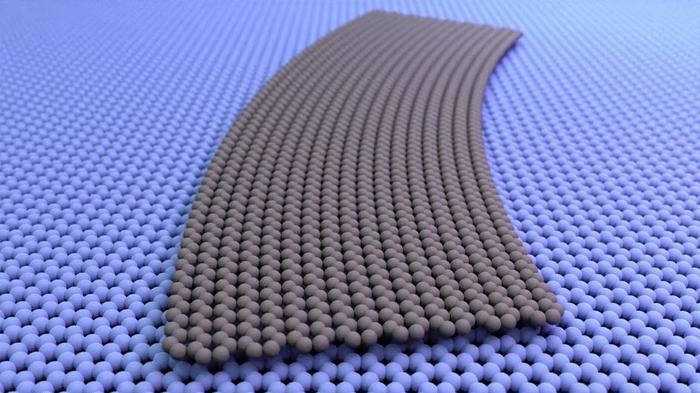
A curved graphene ribbon, illustrated in grey, shown laid flat against another graphene sheet. There is a continuous change in the twist angle between the ribbon above and the sheet below. In some places the atomic lattices of the two sheets line up at a 0° angle to each other, while in others, they are twisted relative to each other by as much as 5°. Image Credit: Cory Dean, Columbia University
Sensor Could Make Mind-Controlled Robots Possible
Professor Francesca lacopi, University of Technology Sydney
lacopi benefitted from encouragement during her high school education, recalling, "I have been attracted to STEM since I was in high school, mainly thanks to a couple of very inspiring teachers who transmitted to me their enthusiasm for the fields of physics and chemistry."
Like many in the field, lacopi's career path is shaped by her curiosity. "I am always looking to learn and understand more about nature in general, including human nature."
Alongside Distinguished Professor Chin-Teng Lin, lacopi led researchers from the University of Technology Sydney (UTS) to develop biosensor technology that enables device control through thought alone.
In collaboration with the Australian Army and Defence Innovation Hub, the brain-computer interface utilizes advanced graphene material and silicon to create wearable dry sensors, overcoming previous limitations.
Published in ACS Applied Nano Materials, the study demonstrates the sensors' conductivity, ease of use, and durability. Positioned over the scalp's visual cortex, these resilient sensors detect brainwaves, translating them into commands via a head-mounted augmented reality lens.
When demonstrated by the Australian Army, the technology achieved up to 94% accuracy in controlling a robotic dog hands-free. With the potential for various applications in defense, manufacturing, aerospace, and healthcare, the researchers envision continued advancements in brain-computer interface systems.
"The most exciting part is the realisation that we can now realise a wearable -surgery -free, easy to wear – cap that enables a direct communication with an electronic platform using no peripherals. The idea is not new, but there were big challenges to have this implemented in a real scenario outside of a controlled environment," explains lacopi.
"First of all, the traditional “wet” sensors used in hospitals are not suitable for prolonged use outside of a clinical setting. Second, in the past we could not count on the current advances in AI to make the analysis of the “brain-waves” so fast and accurate. Thanks to the progress in both dry EEG sensors (an example is our graphene technology) and in the AI that supports the data analysis, we can now make this happen.”

Image Credit: Arif_Vector/Shutterstock.com
New 'Magic Angle' Evidence Supporting Graphene's Superconductivity
Professor Jeanie Lau, Ohio State University
Lau co-led and co-authored a research team from Ohio State University that investigated the mechanism behind twisted graphene’s transformation into a superconductor. Reported in Nature Physics, the breakthrough study reports how when graphene layers are twisted to a precise angle, electrons move at nearly zero speed, yet maintain conductivity, defying conventional theories of superconductivity.
“It is a paradox: How can electrons which move so slowly conduct electricity at all, let alone superconduct? It is very remarkable," remarks Lau.
Haidong Tian, a student in Lau’s group, conducted precise measurements near the "magic angle" which provided crucial insights into this phenomenon. Contrary to expectations, the slow electron speeds were found to be integral to superconductivity, highlighting the role of quantum geometry.
While conventional equations explain only a fraction of the superconductivity signal, quantum geometry accounts for the majority, according to Lau.
The study, conducted in collaboration with theorists and scientists from various institutions, sheds light on high-temperature superconductivity's potential real-world applications in electrical transmission and communication.
References and Further Reading:
Umezaki, U. et al. (2024) ‘Brownian diffusion of hexagonal boron nitride nanosheets and graphene in two dimensions’, ACS Nano, 18(3), pp. 2446–2454. doi:10.1021/acsnano.3c11053.
Garreis, R., Tong, C., Terle, J. et al. (2024) 'Long-lived valley states in bilayer graphene quantum dots.' Nat. Phys. https://doi.org/10.1038/s41567-023-02334-7
Ramezani, M., Kim, JH., Liu, X. et al. (2024) 'High-density transparent graphene arrays for predicting cellular calcium activity at depth from surface potential recordings.' Nat. Nanotechnol. https://doi.org/10.1038/s41565-023-01576-z
Kapfer, M. et al. (2023) ‘Programming twist angle and strain profiles in 2D materials’, Science, 381(6658), pp. 677–681. doi:10.1126/science.ade9995.
Gwalani, B. et al. (2024) ‘Unprecedented electrical performance of friction-extruded copper-graphene composites’, Materials & Design, 237, p. 112555. doi:10.1016/j.matdes.2023.112555.
Greenwood, G., Kim, J.M., Nahid, S.M. et al. (2023) 'Dynamically tuning friction at the graphene interface using the field effect.' Nat Commun 14, 5801 https://doi.org/10.1038/s41467-023-41375-7
Faisal, S.N. et al. (2023) ‘Noninvasive sensors for Brain–machine interfaces based on micropatterned epitaxial graphene’, ACS Applied Nano Materials, 6(7), pp. 5440–5447. doi:10.1021/acsanm.2c05546.
Tian, H., Gao, X., Zhang, Y. et al. (2023) 'Evidence for Dirac flat band superconductivity enabled by quantum geometry.' Nature 614, 440–444. https://doi.org/10.1038/s41586-022-05576-2
United Nations (2024) International Day of Women and girls in science [Online] Available at: https://www.un.org/en/observances/women-and-girls-in-science-day